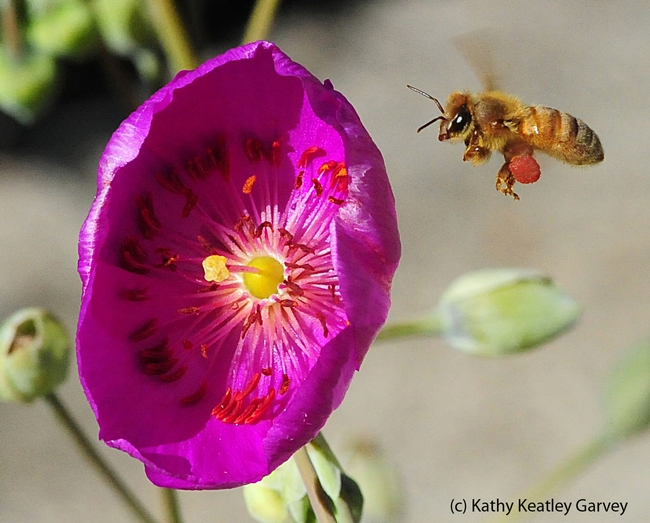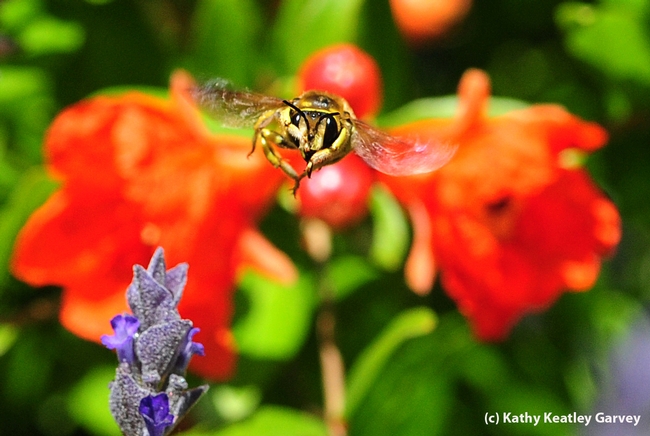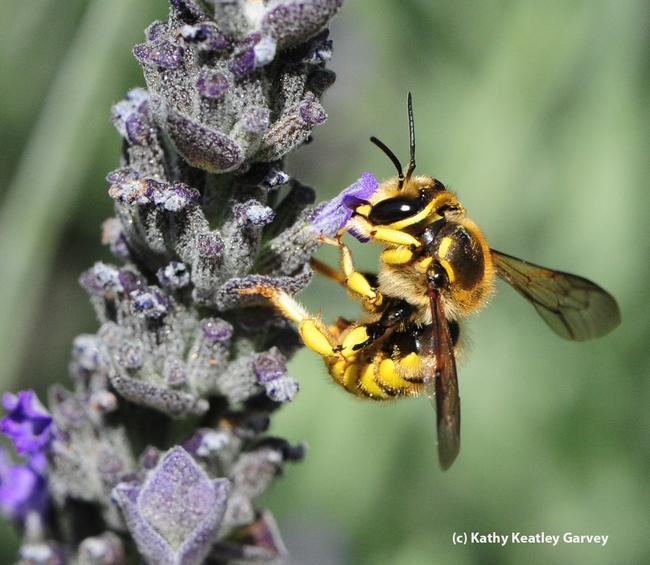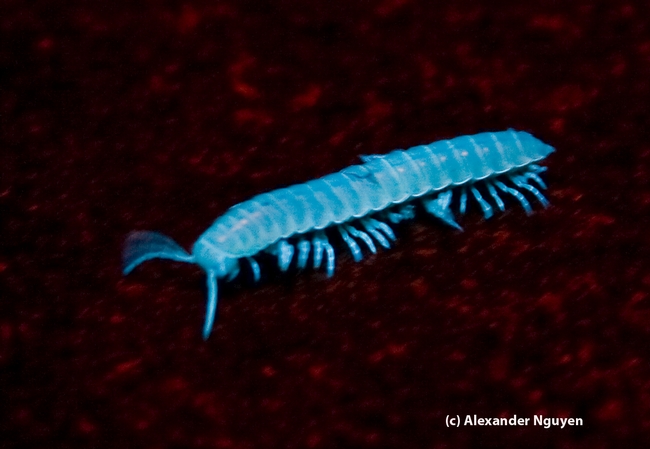From the UC Blogosphere...
In the Blink of an Eye
In the blink of an eye, they visit the rockpurslane (Calandrinia grandiflora).Now you see them, now you don't.They're a...

Sweat bee, Halictus farinosus, prepares to leave one flower for another. (Photo by Kathy Keatley Garvey)

Sweat bee, Halictus farinosus, foraging in rock purslane. (Photo by Kathy Keatley Garvey)
UC Riverside calculations help demonstrate food safety
Robert Krieger, UC Cooperative Extension specialist in the UC Riverside Department of Entomology, calculated that a child could consume hundreds or even thousands of servings of many popular fruits and vegetables in one day and still not experience any negative health effects from pesticide residues.
To make the Pesticide Residue Calculator, Krieger analyzed the highest residue levels found on fruits and vegetables by the USDA and calculated the number of servings which could be eaten in one day without any negative health effects from the pesticide residues that may be present, according to a news release by the Alliance for Food and Fiber.
"At the end of the day, I think it's the responsibility of all parents and all adults to encourage children to eat their fruits and vegetables to help ensure they have long and productive lives," said Carl Keen, professor in the Department of Nutrition at UC Davis.
The Alliance for Food and Farming is a non-profit organization that works to provide a voice for farmers to communicate their commitment to food safety and care for the land, according to the organization's website.

The goal of the Pesticide Residue Calculator is to assure parents it is safe to serve children as many fruits and vegetables as they will eat, whether they are conventional or organic.
Getting the Red Out
"Where do bees get red pollen?" we were asked. "We've seen bees packing blood-red pollen at the entrance to a hive."Well,...

Honey bee packing red pollen from rockpurslane. (Photo by Kathy Keatley Garvey)

Honey bee heading toward rock purslane. (Photo by Kathy Keatley Garvey)
So Very Territorial!
Whether it's coming or going, you notice this pollinator's presence. The European wool carder bee (Anthidium manicatum), so...

Male European wool carder bee is very territorial. Front, lavender blossoms. Back: pomegranate blossoms.(Photo by Kathy Keatley Garvey

European wool carder bee nectaring lavender. (Photo by Kathy Keatley Garvey)

European wool carder bee is strikingly beautiful. (Photo by Kathy Keatley Garvey)
They'll Light Up Your Life
Most scorpions glow under an ultraviolet light, but now a discovery on Alcatraz Island reveals that a certain species of...

This millipede (Xystocheir dissecta) glows under ultraviolet light. Alexander Nguyen of the UC Davis Entomology Club captured this image on Alcatraz, during one of UC Davis forensic entomologist Robert Kimsey's field trips.







